INTRO:
The reboot of XCOM has generated considerable interest in its gameplay. Where earlier generations of turn-based tactical squad combat titles relied on pedantic statistics and did not do much to differentiate a team member from another, the XCOM reboot showed that the calculations behind the gameplay can be greatly simplified while also introducing more variety to the tactical options that the player can have.
Ever since then, there have been titles that emulate the core of the gameplay in XCOM. In the big-name scene, there is an upcoming title based in the Gears of War universe, and Ubisoft has already made a title that is based in a combo setting of Super Mario and Rabbids, of all things.
The indie scene has not been idle on this matter either. Although there has been less than well-designed titles like Halfway, there have been gems like Mutant Year Zero: Road to Eden.
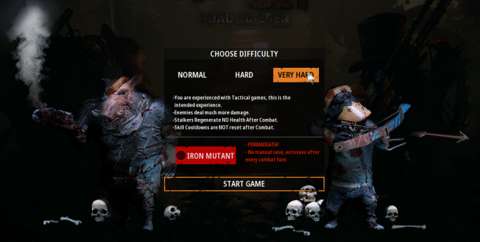
PREMISE:
The game is set in an alternate version of Earth. Presumably with all of its modern-day troubles escalating to untenable levels, Earth has gone down the sinkhole. Although the planet has not been so severely damaged that it would be inimical to life, civilization and the means to sustain it have all been lost. Most of humanity has devolved into savages, while those that remain sane live in isolated settlements.
Even these settlements are under constant threat. Its inhabitants could not venture out far from them, there being so many threats like the ghouls, zone dogs and uncontrolled robots that can inflict sad, lonely deaths. Thus, each settlement believes that it is the only one remaining, and tries to look after its own. Even so, its days are numbered, because without the peace that is needed to develop reliable means of sustaining itself, it is doomed to starvation and social collapse.
The “Ark” is one such settlement. So-called due to its convenient water-based barrier, the Ark has been able to survive thanks to the efforts of its “Stalkers”, who are individuals that go out to look for the resources that the Ark needs.
In recent years, the Ark has been facing shortages of resources. In desperation, its chief engineer, Hammon, has set out in search of the titular “Eden”, and has since been missing.
The protagonists are the eponymous “mutants”, labelled as such because they have appearances and capabilities that are clearly not of normal humans. Some of the Stalkers are these very mutants, and the story happens to begin with two of them: the gruff Bormin, and the grizzled Dux. These two have been tasked by the leader of the Ark – the Elder – with the rescue of Hammon.
They will embark on a journey that would have them coming across other mutants, and learning more about the past of the world and their own origins.
THE MUTANTS:
The eponymous mutants are the main protagonists of the story and the player characters. There are five of them in the main game, though only two are initially present. Each of them is noticeably different from the others in terms of appearance, personality and capabilities, but gameplay-wise, they use the same mechanisms for player characters, which will be described later.
Throughout the game, the player will listen to them making remarks about things. Most of these remarks are about the same topical matter, since their deliveries are intended to be expressions of their personalities and preferences.
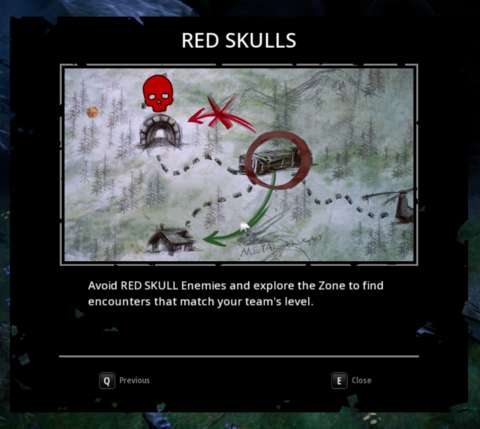
NOT MUCH CHARACTER DEVELOPMENT:
The player characters are, at best, merely instigators and narrators of the progression of the plots in the story. There is next to no drama between them, because they conveniently have many common causes to encourage them to get along well with each other. Even the sometimes-abrasive Dux would not be causing much friction.
Therefore, if the player is expecting scenes about character development, he/she would be disappointed. The most that the player could do is reload scenes so that different characters would be saying things when the game has scripted the player characters to do so.
SCRIPTED REMARKS:
Many maps have location-specific triggers that have the currently-controlled player character making a remark. This remark is usually about the locales in these maps, or what is ahead of the team. For example, there is usually one of these scripts near the starting locations of the maps.
Ostensibly, the player could reload an earlier game-save and have another player character move into the trigger location to hear his/her remark. It is tedious, but the voiced-over lines are mostly worth listening to, if only for the expressions of their personalities.
However, in some maps, the coding on which character would make a remark is not so reliably predictable. For example, there is such a script that triggers when the team is moving down stairs into an underground bunker. The script appears to prioritize Bormin, Selma or Magnus for making the first remark, in that order, regardless of which character that the player is currently controlling.
BANTER:
In lieu of one-off remarks by individual characters, there are some script triggers that play dialogues between the player characters. There are five possible team members, but only three can be in the team at any time. Therefore, there are ostensibly a considerable number of permutations for each dialogue.
In practice though, two or more of the characters are slated to deliver certain lines. For example, Bormin is the default character that would be selected to deliver lines about being cautious or sceptical; if Bormin is not around, then it would be Magnus, Selma or Dux. Whatever the case, those lines with specified notions will be delivered. In other words, the gist of any dialogue will always be the same, regardless of the combination of party members that is being used.
Sometimes, this can result in some notable contradictions. For example, there is a scene in which the team expresses wariness at telepathic messages being beamed into their heads. If Magnus is in the team with Dux and Farrow, Magnus would be delivering the first such expression. Yet, he would also deliver the third line, which is about reassuring the team that there is no serious concern. Such contradictions reveal the lack of thoroughness of the writing.
MOVEMENT AND CAMERA:
Most turn-based tactical combat games use a cursor to direct player characters around. Curiously, Mutant Year Zero has a control scheme that lets the player directly move the current player character about. The camera is locked to an isometric view that is centred on the current player character, and its orientation is controlled with the movement of the mouse.
To players that have experienced more elegant control schemes, this might seem rather backwards, even limiting. For one, not being able to see what is directly ahead of the player character can be a problem, especially if the player character is at risk of falling off a platform.
This scheme is only used in scenes outside of combat, however. When combat starts, the game switches to a cursor-oriented scheme, not unlike the one used in many other turn-based tactical titles.
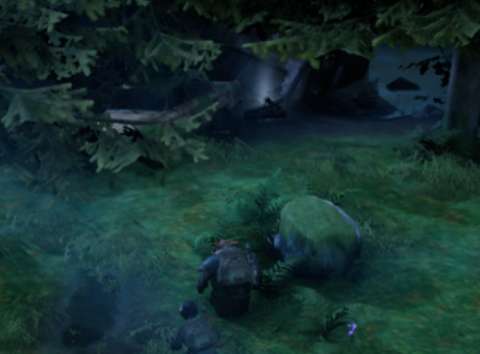
SQUARE GRIDS:
Not unlike XCOM and most other turn-based tactical combat titles that emphasize simplicity, Mutant Year Zero uses a grid of squares for the representation of its combat environs. Objects in the environment either reside in between squares, or occupy entire squares. Only one character can occupy any square. Characters cannot move through squares that are already occupied by another character. This limitation is particularly important when facing enemies that specialize in close-combat.
SHUFFLING INTO GRIDS:
Outside of combat, the player characters can move onto just about any spot in the level that they can put their feet on. However, when combat occurs, the player characters automatically scoot over to the nearest square in the grid.
Non-player characters that are moving about do not have this problem, because their movement paths already follow squares in the grids.
RUNNING & SNEAKING ABOUT:
By default, the player characters are standing and running around upright. The currently-controlled player character has his/her torchlight turned on to indicate who is being controlled. This default movement method is the most convenient for backtracking through a level.
However, it is generally not good for the player to use the default movement method, because it extends the detection ranges of enemies.
Therefore, there is stealth mode. This is indicated by the current player character turning off his/her torchlight, just before the entire team crouch close to the ground. The characters then skulk about. The team moves slower and the player’s view of the environs is reduced.
NO FALL DAMAGE OUTSIDE OF COMBAT:
If the player characters happen to move off ledges, they fall. Despite their grunts and groans, they will not take any damage as long as the fall occurs outside of combat.
CANNOT CLIMB DOWN LADDERS OUTSIDE OF COMBAT:
There is no way to get down from a higher floor to a lower one if there are no stairs. For whatever reason, player characters can climb up ladders, but cannot climb down them. This is an odd design oversight when so many other games have implemented ladder-climbing without problems, and one that would seem even odder considering that player characters do climb down ladders during combat. Fortunately, as mentioned already, falls do not cause any damage as long as they happen outside combat.
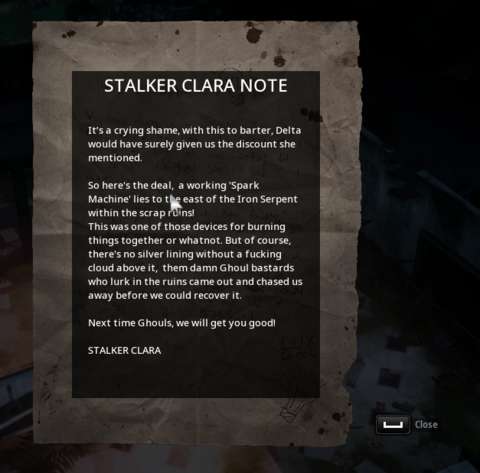
SCRAP AS CURRENCY:
The main task of the Ark’s Stalkers is to find and collect useful materials. Gameplay-wise, this means that the player would be going around the maps looking for scrap to recover.
In the post-apocalyptic setting of the game, scrap metal and e-waste are the only things worth a damn. They are implemented as currencies in the gameplay. Like all video game currencies, the player characters can hold as much scrap as they want – never mind that they may have been collecting tons of them.
Curiously, food is not represented in the gameplay, despite it being mentioned as a concern for the Ark’s survival. Yet, perhaps this omission had been for the better, because it would have introduced more complications into the gameplay. On the other hand, this also means that some elements of the narrative are not convincing because the gameplay does not reflect it.
WEAPON PARTS:
Another type of currency is weapon parts. This is rarer, and can only be spent on weapon upgrades. Nonetheless, weapon upgrades are perhaps the most important element of the progression system, because they affect the damage output of the player characters.
Anyway, weapon parts are obtained from finding broken weapons that have been abandoned, or from taking the guns that slain enemies have dropped. Intact and functional weapons are rare, however, at least gameplay-wise. It is a wonder how the player characters could never seem to salvage an intact gun from any enemy.
Weapon upgrades are described further later.
SCAVENGING:
Some enemies drop scrap or weapon parts as loot, while other sources of these are found in nooks and crannies around the maps. Finding them is sometimes easy, such as a pile of scrap lying on grass. Other bits of scrap are not as easy to find, because their models blend in with the detritus in the maps. Ironically, the scrap piles in junk yards are the most difficult to spot because everything else around them look like scrap.
Sources of weapon parts should have been easier to find, because these always take the form of guns; looking for silhouettes of guns is ostensibly easy. However, due to the fixed camera zoom, their silhouettes might be a tad small.
Fortunately, there are some visual aids that help the player in scavenging things. Firstly, loot periodically sparkles, especially when the team is near them. Secondly, if the team has gotten close to a source of loot and it is on-screen, it is highlighted with a nimbus of white light. Thirdly, loot chests and important items are always highlighted with nimbuses of colours other than white.
Still, the player might be backtracking through a place and might come across scrap piles that had been missed. Perhaps this was intended by the designers of the game, but not everyone would like to do what is technically pixel-hunting.
NO MELEE WEAPONS:
There are no melee weapons for the player characters to use. Considering that there are enemies that are using close-combat implements, this is a noticeable disparity. On the other hand, it is unclear how the game could implement melee weapons for use by player characters. Getting close to enemies is not easy, and there is no benefit to be had from engaging in melee combat with enemies.
Still, there may have been a missed opportunity to provide more diversity to the gameplay. For example, some other titles with turn-based tactical combat have implemented the system of attacks of opportunity.
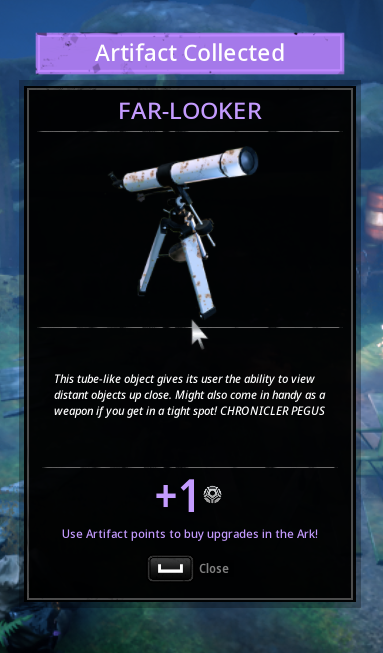
NO AMMUNITION CONCERNS:
Although the narrative includes mentions about dwindling resources, there are no ammunition concerns. There are magazine capacities to worry about, but every character is considered to always have enough ammunition reserves for any fight, regardless of how esoteric their weapons might be.
Perhaps there could have been an element of ammunition management in the gameplay; this could have opened the way for the use of different types of ammunition too. Ultimately, the gameplay follows the tenet of simplification that the XCOM reboot has established.
BUYING STUFF WITH SCRAP:
There is a shop – the only shop – in the Ark that sells things and accepts scrap as currency. Most of its offerings are one-off consumables like grenades and med-kits. Actual guns are noticeably rare, despite the obvious display of guns at the shop.
The shop has limited quantities of items. Coupled with the finite amounts of scrap that can be found throughout the game, it is in the player’s interest to be shrewd about the use of consumables. This should not be too hard for a meticulous player, especially considering that ammunition supply is (unbelievably) not a concern.
WEAPON UPGRADES:
As mentioned earlier, weapon upgrades are likely to be the things that the player pursues most when looking for means to improve the player characters. Weapon upgrading can only be done at the Ark.
Weapon upgrading follows a simple progression. Every gun has three ranks, usually starting at the first. The other two ranks are achieved by paying weapon parts for them, with the third rank costing more than the second. Every rank increases damage output by one point for both regular and critical damage. It is not much of an improvement, at first glance, but the toughness of subsequently-encountered enemies happens to progress at this rate too.
Curiously, upgrades for some weapons change them to a make that is noticeably different. For example, bullet-shooting weapons at the default rank look like ramshackle, improvised monstrosities. The second rank ones look like weathered guns of old but proper manufacture. The third rank ones look well-maintained and very modern. In other words, the weapon upgrades did not upgrade existing weapons so much as they were swapped for other weapons – which is perhaps exactly what happened.
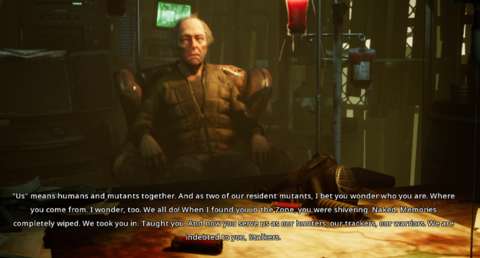
WEAPON ATTACHMENTS:
Each gun can support the addition of one scope and a shot-modifying device. Scopes either increase the chances for critical hits or improve the range of the gun. Shot-modifying attachments impart more damage for critical hits and also provide secondary effects, like setting an enemy on fire.
There are not a lot of options for secondary effects though, but they seem enough for the types of enemies that the player would come across. There are options that set enemies on fire, have robots go on the fritz or knock back enemies. The player might want to return to the Ark to swap these attachments around so that they match the enemies that the player is going to fight. However, most of them work on probabilities, so luck is a factor.
Perhaps the only problem with this otherwise simply-implemented feature is that there is no tutorial for swapping attachments around. Of course, it can be argued that it is simple enough for players who are experienced in games that have inventory management, and turn-based tactical combat games tend to have this.
CAN SCRAP WEAPONS, BUT CANNOT SELL ITEMS:
Intact, functional guns are very rare. They are only ever found as loot from chests, or sometimes sold at the Ark’s shop. Eventually though, some weapons would become obsolete, even if the player has been upgrading them. This is the case for the non-silent weapons that the team starts out with. Fortunately, there is a way to dispose of them profitably: they can be dismantled at the Ark’s workshop for Weapon Parts.
Unfortunately, this is the only feature of “selling” unwanted items. There is no way to sell anything unwanted that is not a gun, despite the fact that the unwanted items would still be useful to someone else and should have sale value.
This has been a perennial complaint that has been made by players since the release of the game. It has not been addressed, or even acknowledged by the developers, suggesting that this was intentional. If so, this is yet another example of the game’s gameplay not gelling well with its narrative.
ARTIFACTS AND NOTES:
There are remnants of human engineering that are still functioning. These are of great value to the people of the Ark, though their technological significance has long been lost to them, unless they are of immediately obvious practicality. Most of them are items that would be familiar to real people, but a few are sci-fi things. After they have been found, they can be turned in at the Ark for small but considerable benefits.
If the player is not looking for these, then he/she would likely appreciate the banter between the mutants as they wonder aloud about the uses of these artefacts. The dialogue is both humorous and tragic, because the mutants have grown up in a world where modern conveniences and luxuries no longer exist.
Notes, written or audio-recorded, do not yield gameplay benefits. They do give tid-bits on the story, but the notes do not elicit any responses from the mutants, suggesting that the notes had been a late shoe-in during the development of the game.
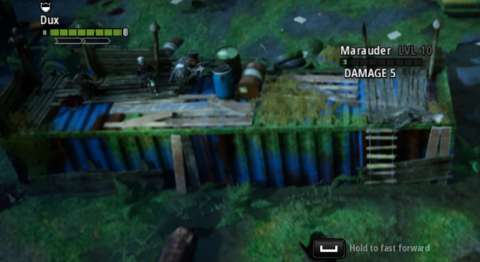
GOING STEALTHY – OVERVIEW:
The player’s team can only ever have three active members at any time, regardless of how many characters that the player has discovered and recruited. The enemies in any map often number more than that, and there is always the risk of attracting the attention of all of them.
This is because when enemies are alerted to the team’s presence, they will alert other enemies during their turn if their compatriots are within range. Things go downhill quickly from there. There will be more elaboration on how enemies alert each other in later sections.
Therefore, it is in the player’s interest to resort to means that can whittle down the enemy without them realizing it – in other words, resorting to stealth.
There is a tutorial early on in the game that instructs the player on how to set the team on stealth mode. When stealth mode is turned on, the currently controlled player character will not activate his/her torchlight, the entire team crouch, and they only move around by skulking. Having the team crouch-walking about can be a silly sight, though it would not seem odd to veterans of third-person stealth games.
Anyway, there are certain other elements in the gameplay that are associated with the stealth portions of the gameplay.
DETECTION RANGE:
Every enemy has a detection range. This is shown as a circle that radiates outwards from its person. If a player character is within the vicinity of the circle, parts of it begin to redden. If the player character is within that circle, the part of the circle in which the character is in becomes alarmingly red; this is when the enemy has spotted the player character and an alarm would be raised. When this happens, there is no way to silence that enemy; the discovery is not reversible.
If the player disables stealth mode, the detection ranges of enemies rapidly expand up to their maximum.
Something that the game does not explain so well to the player is that the circle can grow if the player character is close enough. This is unpleasant to learn the hard way.
Only the approach of the current player character would trigger the growth of a detection circle. The other player characters that are following the currently-controlled one will not trigger the growth, which is perhaps for the better.
ENEMIES SEE THROUGH OPAQUE OBSTACLES:
The detection ranges of enemies are not obstructed by anything that is opaque, be they obstacles in the way or other characters. This is hinted at by the presence of the circles, which can be always be seen as long as they are not obscured by models of objects.
This also means that sneaking behind opaque obstacles does not work, unlike what the player could do in stealth games.
BAD PATHFINDING:
In video game history, the scripting for CPU-controlled NPCs that follow the player character around tend to be flawed, especially at moving around corners. This would particularly be the case for Mutant Year Zero, because there are a lot of corners in the environs.
If the other player characters lag behind due to bad path-finding, they accelerate their movement, typically by sprinting. If they lag too far behind anyway, the game eventually de-spawns and re-spawn them next to the currently-controlled player character. This happens quite often and is quite unbelievable, but it keeps the team coherent.
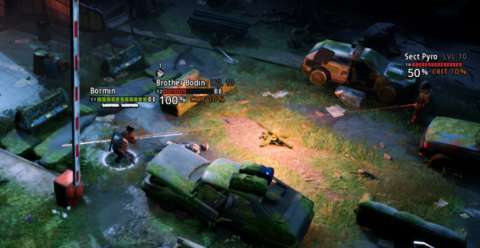
ENEMIES IGNORE FOLLOWING PARTY MEMBERS:
The problem of bad pathfinding is compounded further in games with stealth elements because these NPCs’ bad path-finding becomes a serious liability. This is even more infuriating when CPU-controlled team members are the ones who are bungling up.
For better or worse, game developers of today have implemented a crudely simple solution: enemies ignore characters that are not directly controlled by the player. Unfortunately, Mutant Year Zero resorts to the same unbelievable solution.
GONE LOUD, BUT NOT BEING HEARD:
The coding for the stealth portions of the gameplay is not at all tight. Some examples of flaws had been mentioned already.
Furthermore, the aspect of noise in the stealth gameplay is not thoroughly accounted for in the coding. The most notable gap is that as long as an enemy does not perish within the detection range of another enemy, the other enemy will not notice that – regardless of how explosively loud or flashy that its compatriot’s demise was.
An example of this can be seen when Ghoul Pyros die; they drop their currently held Molotov Cocktails when they do. This should have made a loud commotion and even spread some flames around. However, as long as the Pyros’ corpses did not end up within the detection ranges of other enemies, their demise will not be noticed.
An even worse example is when the player encounters and defeats certain giant war machines. They explode with loud and bright bangs – but as long as the explosions occur outside of the detection ranges of other enemies, the latter would not know about them.
NO WAY TO LURE ENEMIES AWAY:
Due to the aforementioned limitations in the detection capabilities of enemies, there is no way to lure enemies away from their patrol routes or sentry spots. Luring enemies away has been a staple of stealth-oriented gameplay for quite a long while, so the absence of this tactical option would be particularly noticeable to veterans of stealth games.
OBSERVING & TRACKING ENEMIES:
The limitations in the stealth portions of the gameplay means that the only means that is left to the player is to observe the positions and movements of enemies, if they move at all. This observation can then lead to the removal of isolated enemies.
To help the player in this matter, any enemy that that has been spotted by the player characters, i.e. their hit point meters and level ratings appear above their heads, will be marked on the navigation compass as red nocks.
However, the red nocks do not always line up well with the relative direction of the enemies that they are supposed to be pointing at. Furthermore, phantom red nocks can sometimes appear and stay until the player reloads a game-save.
If the player leaves the map and returns to it later, all the red nocks are wiped. The player has to find those enemies again in order for the nocks to reappear.
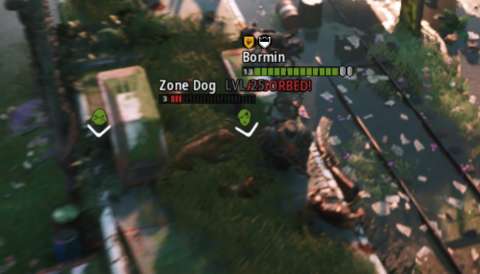
SILENT WEAPONS:
Silent weapons are critical for stealth-oriented approaches. Silent weapons do not immediately raise alarms, and they do not let the target alert the others even after it is hit. This means that the player can pile attacks on a single isolated target with silent weapons in order to kill it. If the player is successful and the target dies outside of the detection ranges of other enemies, the game simply exits combat and lets the player continue stalking other enemies.
That said, systematically stalking and eliminating enemies one by one can be satisfying. It is also very efficient, in terms of consumables used, because the player only ever needs the silent weapons.
Thus, it would not be a surprise that a player that has realized this would prioritize the silent weapons for upgrading. This is just as well, because there are far fewer silent weapons than there are non-silent ones. The only setback is that silent weapons are not particularly powerful,l so the player needs to be sure that the player characters have the capability to eke out enough damage to eliminate the target.
HIDING:
Hiding is the most effective but unbelievable element of the stealth gameplay.
If the currently-controlled player character is next to a piece of cover outside of combat, the player can have him/her stick to the cover. The player character is considered to be effectively hidden – very much so.
Even if enemies come close, go around the cover or even bump into the player character, they will not discover the player character. This can seem astoundingly unbelievable, as can be seen in one of the screenshots in this review.
However, if the player has a player character coming out of hiding while within the detection range of an enemy, he/she is automatically discovered. This is important to keep in mind when having characters hide behind a piece of cover that is close the enemy’s detection range, due to the growth of the range as has been described earlier.
Any team member that is hiding will not respond to any calls to regroup, for better or worse. Considering that enemies do not detect player characters that are not under the player’s direct control, this is a notable limitation.
If the player initiates combat, any hiding team-mate that happens to be in the detection range and in the view of an enemy (i.e. nothing is obscuring the team-mate’s model, relative to the enemy’s position), that team-mate will be discovered and is no longer considered as hidden. The enemy will not immediately raise the alarm, but if the player exits combat, the enemy will immediately do so.
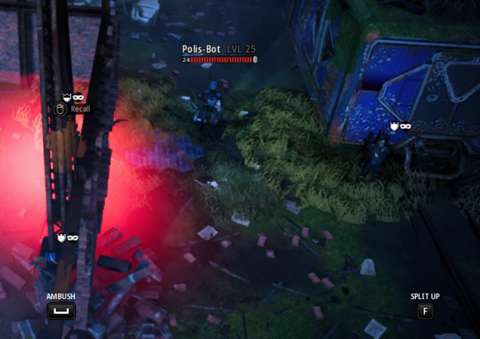
VISUAL INDICATORS OF DISCOVERY:
Usually, when the player character is discovered, there are two signs that indicate this. The first is an icon that appears over the models of enemies that have been alerted. The second is that the enemy turns to face the player character.
If the player character is discovered outside of combat, the camera detaches from the player character and zooms over to the enemy that made the discovery. This is straightforward and understandable.
However, during combat, it is not so easy to know which other enemy has discovered the player characters, especially if they are off-screen. This is because the visual indicators for discovery occur when the player character’s attacks land, but the camera only shows the player character and his/her target during this moment. The most that the player could do is ensure that the target is not within the detection ranges of the other enemies.
GOING LOUD AND BEING HEARD – OVERVIEW:
Sometimes, going stealthy is not possible. One example is when enemies are grouped too tightly together that picking them off stealthily is not possible, or they are just too tough for kills with silent weapons in a single round. Observant players would eventually learn to spot such groups.
Still, if the player has to go loud, he/she is wise to make sure that his/her team has the opening moves, and to maximize the effectiveness of these.
HIDDEN TEAM-MATES:
If the player has been planning his/her opening moves, he/she is likely to have team members hidden behind cover, relative to the positions of his/her intended targets. These team members have yet to be discovered by enemies and will remain undiscovered as long as they do not move from where they are, or the enemy does not go around their cover (and thus spot them). These team members will gain bonuses to their chances for critical hits (which will be described further later), so their first attacks will be particularly devastating.
ATTRACTING ENEMIES:
One of the main reasons for going stealthy whenever possible is that it is easy to attract the attention of other enemies after the player has gone loud, deliberately or unwittingly.
Any enemy that has just been alerted to the presence of the player’s team will begin their first turn by alerting any other enemy in their maximum detection range. The others that are alerted will automatically relay the alert to any ally within their own maximum detection range. This can result in a lot of enemies coming after the player.
Weapons-fire that is not silent is the loudest give-away. In this case, the detection range of enemies is counted at twice of their maximum. This means that once the bullets start flying, the enemies start coming too.
There are also some scenarios that are scripted such that all enemies will be alerted to the presence of the player characters. These situations can be unpleasant.
Any enemies that have been alerted to the presence of the player characters will pursue them relentlessly until they are slain. They will always know exactly where the player characters are, and will attempt to flank them where possible.
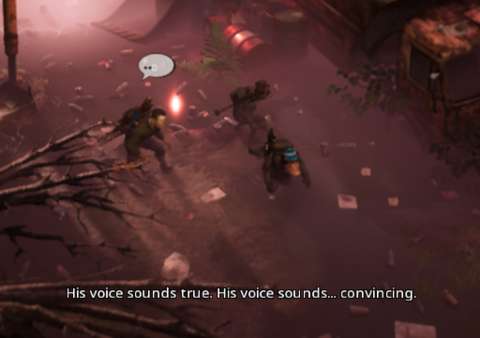
COMBAT ELEMENTS – OVERVIEW:
Mutant Year Zero would not be a turn-based tactical combat game if there are not mechanisms that the player has to keep in mind and exploit for maximum effectiveness. There are a number of them, most of which having to do with the environs and the presence of any sources of illumination.
ACTION POINTS:
For better or worse, the XCOM reboot had introduced a simplified system of Action Points, in which each character has only 2 Action Points that can be used to do one or two things, including moving about. In the case of moving about, each Action Point (AP) can be used by a character to move up to his/her/its max movement distance in terms of tiles. Regardless of the distance moved, the AP is spent anyway.
Following the design policies that XCOM has set, tactical options that will end a player character’s turn will have labels indicating this.
COVER:
Ever since XCOM introduced a conveniently implementable cover system, most other turn-based tactical combat games have implemented similar systems.
In this one, there is “low cover” and “high cover”. Low cover inflicts a small penalty to any chance to hit a character behind it, whereas high cover inflicts a considerable penalty. That is, as long as the piece of cover is between the character and its attacker.
The game sometimes have problems deciding whether an enemy is behind cover or not. Usually, an enemy that is taking cover will happen to have animations and postures that show it cowering behind cover. Sometimes, an enemy does not show these, but still have cover anyway.
Apparently, this is due to any piece of cover that happens to be in between the enemy and the player character that is targeting it. Yet, whatever that the game considers to cover is not always convincing. For example, the cover may be obscuring the enemy’s legs below the knee and the enemy is still counted as having low cover.
Cover can be destroyed by certain weapons. Hand grenades are the most common methods of removing cover, but there are a few guns that can destroy cover too. These are handy, especially if the player could not have the team going around enemies to attack them from another angle.
CHANCE-TO-HIT AND D4 RNGS:
For better or worse, the most important element of combat is the chance-to-hit rolls. Players who have grievances against this genre of games due to this luck-dependent system will not find a break here.
The chance-to-hit probabilities are not based on D100 RNGs, such as the ones used in XCOM. Rather, they are based on D4’s. This is apparent from the fact that the chance-to-hit percentages are presented in multiples of 25%.
Perhaps such a delineation would have been a bit more understandable than a D100 RNG. After all, there have been more than a few grumblings by players of XCOM and its sequel about chance-to-hit rolls of 90% or higher still failing all too often.
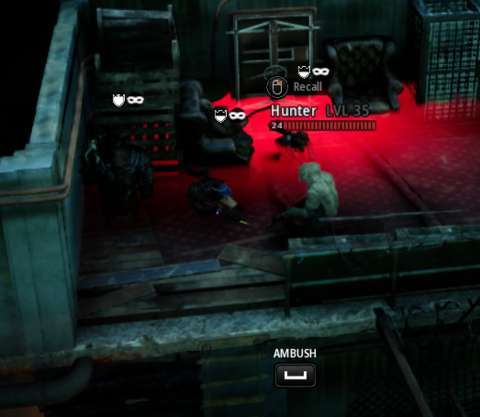
HIT FACTORS:
There are not many factors that go into chances-to-hit, but they are always shown to the player and are quite easy to manage. It is the player’s interest to stack many beneficial factors and minimize the bad ones. All of the factors are clearly mentioned to the player when a player character aims at a target, which is very convenient.
As for the factors, some of them are staples of the genre, such as having the target on a different elevation. Some others will be described shortly, in their own sections.
ILLUMINATION:
Another factor that affects chance-to-hit is whether the target is illuminated or not. If the target happens to be near a source of light, like a campfire or the light from a flare, the target is easier to hit.
(Side note: The world still has enough sunlight for plants to somehow grow, as is evident in a map that has a vegetable and mushroom farm, but it does not have enough light to illuminate an object clearly. This may be another example of the gameplay not exactly matching the setting, but there is an upcoming DLC about what seem to be mutant plants.)
In the programming of the gameplay, flares are the only “grenades” that are considered to be “silent”, i.e. they will not alert the enemy when used. Still, it is unbelievable that enemies do not seem to be alarmed at all by the sight of a flare landing next to them.
KNOCKBACKS:
Perhaps the most sophisticated yet most frustrating element of combat is “knockback”. As its name suggests, knockback is about characters being knocked back from a blow. Some guns have the innate ability to do so, such as the Gaper. They can also be given an attachment that lets them do this. Some mutations, such as Bormin’s Hog Rush, can do this too.
In non-stealth combat, knockback should be utilized to force an enemy into a hazardous situation, such as off a ledge or into a place that has been set on fire. An enemy that is knocked back into a piece of cover also destroys the cover.
However, if the player wants the team to stay stealthy, including knockback in one’s strategy is a mistake. If the player is trying to pick off enemies that are at the edges of their groups, knockback runs the risk of them falling into the detection range of their compatriots, thus alerting the latter.
REGULAR HITS AND REGULAR DAMAGE:
Interestingly, all weapons in Mutant Year Zero have guaranteed damage output. The only factor of luck to be had with them is their chances of inflicting critical damage, and even so, this is much in the player’s control. This predictability allows the player to reliably estimate the number of shots that is needed to eliminate an enemy.
That said, the regular damage output of a weapon is determined by its type and upgrade level, as has been mentioned earlier. To recite an example, weapons that are silent have low damage output, in return for their furtiveness.
At the risk of including a spoiler in this article, the player will be getting more advanced alternatives of the weapons that the player has gotten earlier in the playthrough. Therefore, the player might want to hoard some weapon parts for these guns.
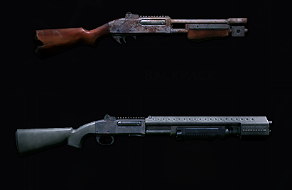
CRITICAL HITS, CRITICAL DAMAGE AND CRITICAL CHANCE:
Interestingly, every weapon has a critical damage rating. This is the damage that it inflicts through a critical hit. Again, this helps the player plan his/her attacks – as long as he/she can ramp up the percentages for a critical hit to happen.
Speaking of which, the default chance of a critical hit is the one shown in the weapon’s statistics. Critical hit chances can never be reduced below this default. However, it can be increased, if the player is aware of the factors for that.
Some of these factors can be naturally achieved. One of them is having a player character take a shot at an enemy from an elevated position. (Presumably, the player character has a better shot of hitting the heads of enemies, but that does not exactly translate to shooting at clearly inhuman enemies.)
Other factors come from the weapon, specifically its scope. One of the types of scopes increases its critical chance, but at the opportunity cost of not using the other type of scope.
The third factor comes from the player characters themselves. They can have mutations (more on these later) that increase their chances for critical hits, provided that the conditions have been met. For example, two of the mutants have mutations that somehow increase their chances for critical hits when firing from higher ground.
MAGAZINES AND RELOADING:
For better or worse, XCOM also introduced the notion of designing the magazine capacities of weapons to balance their potency in combat, regardless of their lack of believability. Mutant Year Zero follows this policy. This led to oddities, such as having only two rounds in the magazine of a modern handgun.
Nonetheless, keeping track of the rounds in a magazine is important. For one, weapons that have capacities of only one round cannot be used for double-shot mutations. Besides, reloading does not end a player character’s turn.
OVERWATCH:
When a fight is really going down, it is more than likely that one or both sides would resort to the time-honoured tradition of turn-based tactical combat games: overwatch.
As a reminder, overwatch is the act of ending one’s turn, in return for having the opportunity to shoot at enemies in their own turn. In the case of this game, the variant of overwatch that is used is the one that is used in XCOM, namely any character on overwatch can only shoot at one enemy in their turn but no else.
In this game though, having to use overwatch is usually a sign that a fight is dragging out longer than it should. This rarely goes well for the player, for there is no benefit to having a prolonged fight.
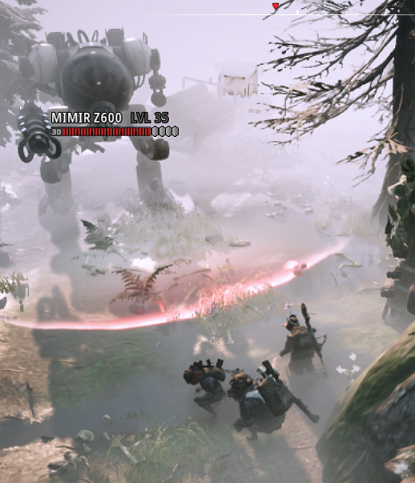
EXPERIENCE GAINS AND MUTATIONS:
All of the player characters share the same experience meter, which is shown on the top left corner of the screen. However, the exact amount in the experience meter is not clear.
The team gains experience by defeating enemies by whatever means (the most efficient being the stealthy ones, of course). The amount of experience that is granted by any enemy is unclear, but it appears to be dependent on the level of the enemy.
When the team gains a level, every mutant in the team gains a level, and a point to spend on mutations. There are no other immediate benefits, but the Ark’s shop might have new things available. As for the cost of the mutations, the starting mutations need only one or two points, but the later ones require a lot more.
There are two overarching categories of mutations. One of these are mutations with benefits that will always be available to the mutants, such as hit point increases. The other category of mutations are their sources of offensive and defensive powers; judicious use of these can easily turn the tide of battle, or stealthily eliminate all enemies within a single round.
“EQUIPPING” MUTATIONS:
This second category of mutations are further typified into three types: passive, minor and major. A passive mutation always imparts its bonuses, though these are usually of situational use. The minor and major mutations can only ever be used in combat. Despite their labelling, major mutations are not always more powerful than minor ones.
Each mutant can only have one of each type of mutation, and can only change mutations outside of battle. Therefore, it is in the player’s interest to examine the enemies that the player intends to eliminate and adjust the mutations accordingly.
KILL-BASED COUNTDOWNS:
Interestingly, Mutant Year Zero does not use countdown timers for the abilities of player characters, even though it is proven to be a convenient and decently balanced design. Rather, the game counts the kills that the current team has made. To elaborate, after a minor or major mutation has been used, the team needs to make a number of kills to get it refreshed.
Any kill is counted and applied to any used mutation on any member of the team, including any that has not been equipped. However, mutants that are not on the current team do not get their mutations refreshed; they have to be on the team for this to happen.
Thus, the player has to consider the pace of the killings that the team has been doing, and switch out the roster so that any mutant on the team has his/her mutations refreshed.
On the lower difficulty settings, the kill counters are reset to full after every engagement, making the game significantly easier. Nonetheless, with careful planning in playthroughs on the higher difficulty settings, emphasis on stealth and switching out of characters, a shrewd player would have the mutations that he/she needs.
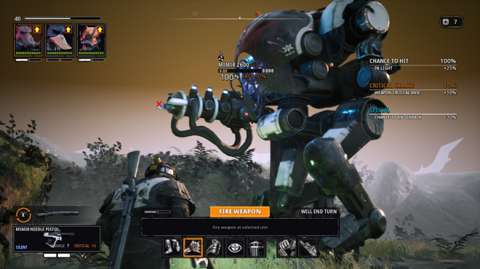
GRENADES:
Grenades are the last and perhaps least of the skilled player’s arsenal. With the exception of the flare, using any grenade usually means that the player is opting out of stealth, yet stealth is obviously the easiest way to eliminate enemies without taking much retaliation in return.
The Flare has been described already. Despite not inflicting any damage, it is likely the stealthy player’s ‘grenade’ of choice, if only because it counts as a silent weapon.
The Hand Grenade is guaranteed to destroy any piece of cover in its area of effect – including any walls and floors. It does considerable damage, but destroying cover is its main purpose.
The Molotov Cocktail sets an area on fire, thus denying it to any enemy that can catch fire. Interestingly, the fire also counts as a light source, so tossing a Molotov at enemies, especially immobilized ones, is an alternative to using a Flare. Incidentally, Molotov Cocktails are also the most common grenades.
The Smoke Grenade, as its name suggests, emit smoke. The smoke prevents anyone in it from being targeted by ranged attacks, but also prevents them from using any ranged attacks either. At best, the Smoke Grenade is meant to help protect exposed team members, though having to resort to these means that the player may have been making mistakes.
Interestingly though, the smoke puts out any fire, and prevents any fire from breaking out in it too. Thus, the Smoke Grenade can be used together with the Molotov Cocktail for some interesting combos.
The EMP Grenade is meant to be used against robots. It incapacitates them rather readily, regardless of how advanced they are; the robots do not even get a chance to resist its effects. Even though the effects are temporary, they can be reapplied to indefinitely suppress the robots. Thus, EMP Grenades make any encounters with robots exceedingly easy, which is just as well because robots are difficult to fight head-on due to their advanced weaponry and armor. On the other hand, EMP grenades are the least common of the grenades.
ARMOR:
Armor is a factor that reduces damage from landed hits. Unlike the armor in XCOM, armor in Mutant Year Zero is there to stay and cannot be removed by any means. Consequently, armor is just there to slightly complicate the player’s estimation of the damage output that is needed to eliminate an armored enemy. Perhaps there could have been more sophistication to this part of the gameplay, i.e. the means to strip armor, just like in the XCOM reboot.
ENVIRONMENTAL DESTRUCTIBILITY:
Almost all objects in the environment can be destroyed. This includes any piece of cover. All of these destructible objects have the same durability, even if they are significantly different. For example, a stone boulder will be readily destroyed by a hand grenade as would a rotting wooden floor.
Upon this realization, the player may be tempted to just toss hand grenades to break apart the enemy’s cover, or blow out floors from under them. However, this is not always a great thing to do. For one, it may prevent the player from reaching goodies. Secondly, any loot that happen to be already lying around on a destructible object will be destroyed together with that object.
In the former case, there is a work-around. If the player exits and re-enters a map, any destroyed environmental object is restored, including any buildings that have collapsed. It is a tad unbelievable, but it does help the player reach any loot that has yet to be looted.
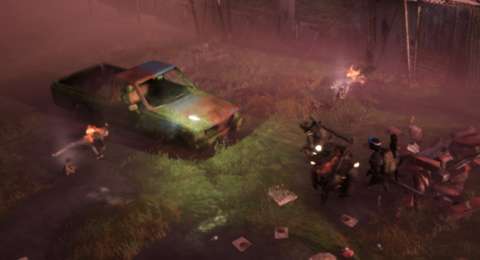
BLEED-OUT:
When a player character is downed, he/she is not taken out of the fight immediately. Instead, he/she is “bleeding out”. He/She can still be revived with the application of a medical kit, but this requires a team-mate to be nearby and spend his/her turn to apply the revival. The reviving process has a short range, so the other mutant may have to risk going out of cover too. Smoke grenades would be handy in covering them.
On the other hand, if the situation has deteriorated to the point that a team member is bleeding out, the player might have erred badly.
Anyway, a mutant that has bled-out is out of the combat and cannot be revived until after the fight – if the player won. Even so, the mutant returns with very few hit points, thus requiring an application of the precious med-kits.
ENEMIES – OVERVIEW:
There are not many categories of enemies in the game. They can be broadly lumped under two major categories: organics and robots.
There are only two types of organic enemies: the ghouls and their psychic masters, and the zone dogs. The ghouls and their psychic overlords are the main antagonists of Road to Eden, while the zone dogs are either the ghouls’ pets, or are just vicious ferals.
Robots are the remnants of human civilization. They are built to last, but have since malfunctioned upon having lost their human masters (and the maintenance that they provide). Robots tend to be armored and are impossible to set on fire. However, as mentioned earlier, they are particularly vulnerable to EMP attacks.
Either category of enemies can be defeated through stealthy patience, because all enemies share the same detection mechanisms. In fact, as long as the player knows about the defensive capabilities of enemies and how to counter them, there is no need to know about their offensive capabilities. Besides, if the enemies are able to bring their offensive capabilities to bear, the player might not have been doing well in keeping things stealthy.
GHOULS:
Ghouls hate any other living beings, whom they would just kill and eat, usually in that order. Although most of them are psychotic, they are sapient, and are thus capable of handling weapons and finding cover.
There are several types of ghouls, each with his/her own niche in combat.
The Butchers are primarily close-combat fighters. The Marauders are only capable of handling handguns. Both are the cannon fodder of the ghouls, though Butchers are more common. More often than not, these stray from the main groups, and are easy to eliminate stealthily.
Hunters are the sharpshooters of the ghouls. Indeed, they rarely miss. Pyros are ghouls that are only ever armed with Molotov cocktails, so they are mainly meant to deny the player any defensive locations. Tank ghouls are tough and well-armoured, can make use of cover, and are armed with heavy weapons.
The ghouls’ psychic overlords would not be described much here, because they are actually a part of the story and so describing them would have been quite the spoiler. Suffice to say for now that their psychic abilities grant them capabilities that can shred the mutants apart, if the player could not find the means of incapacitating them.
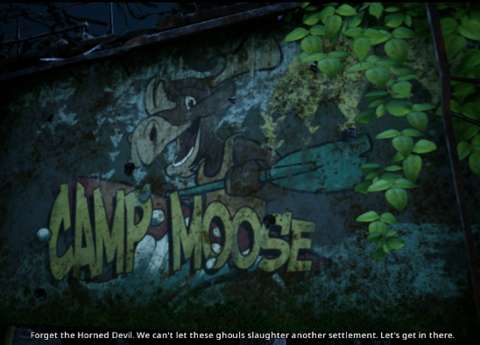
ZONE DOGS:
Zone dogs only appear as enemies in the first half of the playthrough. Although there are often more than a few of them, they are straightforward enemies, having no tactic other than to get close to deliver bites. They only ever attack the closest target, and only ever this one as long as it is still alive. That said, there are two armor suits in the game that can completely negate the damage from their melee attacks, making them a triviality.
ROBOTS:
The first few robots that the player encounters are medi-bots. The ghouls have somehow reprogrammed the robots to serve them. Despite being armed with what are clearly hand-to-hand implements, Medi-bots will cower behind cover for the duration of a fight, until it detects any downed ghoul. The downed ghouls can be revived if the med-bot tends to them for at least one turn. Therefore, it is in the player’s interest to eliminate these robots lest they prolong a fight for too long.
Then, there are the robot police. Prior to the apocalypse, society has already collapsed and these robots have been ordered to enact brutal martial law. Gameplay-wise, these are the earliest of the robots that are armed and actively hostile. They are often armed with modern weaponry, and the later ones have sci-fi guns.
The MIMIR war constructs are the last series of robots to be encountered. Incidentally, there would have been a lot of foreshadowing prior to the player’s first encounter with one. The first of these is a mech with building-busting weaponry and a lot of hit points. If the player has yet to realize that disabling robots with EMP attacks is the best way to handle them, this robot would teach the player that.
There are other nastier robots, which would not be described here because they are integral to the backstory of the game. Suffice to say that they, like the other robots, are susceptible to EMP attacks.
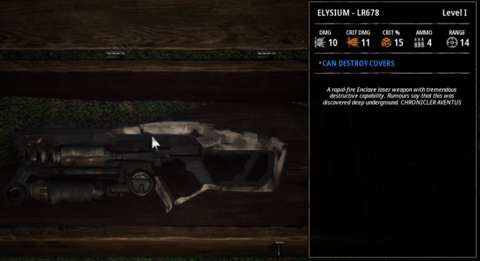
GENERAL INTELLIGENCE OF ENEMIES:
As veterans of turn-based tactical combat titles would expect of CPU-controlled enemies, the ones in this game had been designed to be defeated. The most intelligent enemies are the ghouls, but even then, that is not saying much.
Generally, if their current situation gives them few options, they would not do anything else. For example, if they are trapped behind a piece of cover and moving out would draw overwatch fire from the player’s mutants, the enemy would just go into overwatch.
If there is an obviously advantageous option, such as getting behind a piece of high cover, they would do so, virtually predictably. This means that the player could set them up for ambushes by a hidden mutant. Likewise, if they are in a risky spot, such as ground that has been doused with a Molotov cocktail, they will vacate it.
If there are safe and reliable options to getting to where they want to be, they would take these. For example, in the pursuit of any mutants that are withdrawing to a better position, ghouls always end their turns behind any pieces of cover in their way, if any.
Otherwise, the enemies make poor decisions. For example, they would take cover that leaves them exposed to the other mutants, just so they can take a reliable shot at a mutant.
Zone dogs and robots are a lot less cautious. Zone dogs are understandably not bright, and they are incapable of using cover anyway. Only humanoid robots can take cover, and even so, these enemies always prioritize getting shots out instead of minimizing damage to them. As for the non-humanoid robots, they tend to take the straightest path – which is just well because some of them can just barge through obstacles along the way.
VISUAL DESIGNS – OVERVIEW:
The game’s developers have not held back on the graphics of the game. At the highest settings, the game can strain the highest-end machines at this time of writing. The graphics are customizable of course, so the graphics can be watered down such that the game can run on slower machines.
Of all the graphical settings that are available for the player to tweak, the resolution scaling is the one that puts the most load on the computer. At the highest, the game looks its sharpest, but also tanks frame rates if the player does not have a high-density graphics card to deal with the processing load.
CLEVERLY DUPLICATED ASSETS:
Observant players might notice that many of the maps have environments that had been made using the same individual visual assets. For example, the trees are actually composed of combinations of one trunk from the set of trunks, and branches from a set of branches. Another example is the distribution of tufts of grass, and the textures for puddles of water.
This resulted in the maps looking quite different from each other, even though many of them are sharing the same tile-sets and the other assets.
A LOT OF ENVIRONMENTS FOR A SMALL REGION:
That said, there are not plenty of environment types that can be seen in the game, but whatever there are, they happen to be quite numerous for a game that takes place in what turns out to be a few provinces in a European country.
There are the overgrown forests and vegetation, which have taken over most of civilization. In particular, there is the foreboding giant thorny plant that rings the edges of most maps. (This obviously not-natural plant is never explained in the game – though the DLC for the game may explain this.)
Next there are the remains of civilizations. There are many gutted houses in the countryside, and in what were once city areas, plenty of partially collapsed brick buildings. Most of them suggest that there had been great unrest that led to such damage and neglect.
There are also a lot of corpses lying about. It can seem unbelievable that these corpses are still around and even giving form to their clothes despite decades after what seemed like the end of human civilization. Nonetheless, the rather common-place littering of corpses conveys the intended message of tragic senseless deaths.
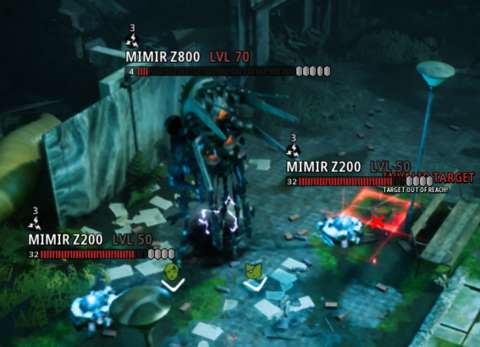
VISUAL CONFORMITY TO GRID SHAPES:
A perennial issue among turn-based tactical combat titles is that the visual designs of their environments have to be built around the grids that are used for their gameplay. This gives their environments a rather artificial look. Yet, if they do not, the irregular shapes of objects in their environments may lead to ambiguity of where a tile in the grid begins and where it ends.
For better or worse, Mutant Year Zero attempts to go for something in between. Parts of the levels that take place far away from parts that have the presence of enemies have more natural-looking shapes. The parts that do have enemies have boundaries and objects that conform to the square grids. This means that an observant player would eventually learn to spot the signs of an upcoming fight, e.g. when the environs that the team is going into have hard edges and perpendicular corners.
FOLIAGE:
Many of the places that the player characters will be going to have a lot of plants, despite the post-apocalyptic setting. The most notable of these is the thick thorny bramble that occupy the edges of the maps.
Indeed, there is so much plant-life, that the player’s view of the level might be obscured in places like forested regions. The game does make them translucent or transparent if they happen to be clipping into the invisible object that is the camera, but this is sometimes not enough because only the plants that are close to the team are rendered so.
Fortunately, there is an option to lower the amount of foliage in the levels. However, plants that have impact on gameplay, such as trees and tall grass, are not rendered invisible.
GLOOMY SKIES:
Ever since the catastrophes that doomed the world, the skies have been so gloomy such that day-night cycles are unclear. Certain locales appear to be perpetually set at certain times of the day. For example, the map “Castle of Light” seems to be indefinitely set at dusk or dawn. The day/night circumstances do not affect the gameplay.
ANIMATIONS:
Most sapient characters have humanoid builds, so it would not have been too hard for the animators to animate them. Likewise, the humanoid robots would have been just as straightforward to animate, and the zone dogs benefit from long-time research into the animations of canines. As for the mechs, there had been animations for mechs for a long time, thanks to the BattleTech franchise. The floating robots would have been even easier to animate.
The only unique animations are those for Bormin and Dux. Apparently, their designs had been among the earliest for the game – likely when the game’s storyboarding was about a bunch of hardboiled anthropomorphs.
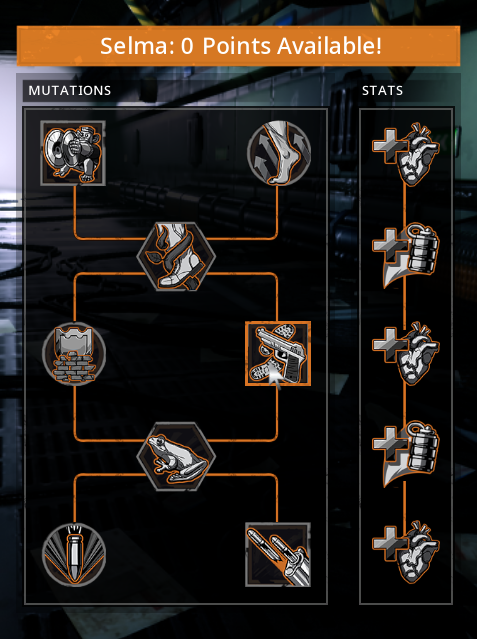
SOUND DESIGNS:
The music is the first of the sounds that the player would hear from the game. They are mostly electronic pieces, albeit with deep tones rather than the chirpier sounds that the player might hear from tracks for indie games. Most of the soundtracks in the game have an ominous impression, which is just as well because the game tries very hard to emphasize the theme of danger.
Next, there are the ambient sounds. Despite the post-apocalyptic setting, there is still considerable life around, including a lot of (rather large) birds that happen to be frolicking around the various maps. The beat of their wings is accompanied with the rustling of leaves in thickly wooded areas, the howls of the wind in wintry places, and the hum of machinery that is still working despite the passing of the ages.
Then, there are the sound effects for combat. Gun-fire and explosions account for a lot of these, understandably. As for the gun-fire, they are a mix of typical bullet discharges that are so ubiquitous in video games, and the typical warbling and fizzling that can be expected from the discharge of sci-fi guns.
VOICE-OVERS:
Perhaps the best sound designs are the voice-overs for the mutants. Most of them benefited from talented people that know how to deliver convincing expressions of their personality - Bormin and Dux, in particular. The Ark’s leader, the Elder, also deserves a mention because of the range of emotions that he expresses as the playthrough progresses.
The ghouls are also given voice-overs. The deliveries of their voice-actors/actresses are not so convincing, mainly because of the artificial hoarseness that the actors/actresses have to provide. Curiously though, the psychic overlords can speak without any speech impediment.
SUMMARY:
Mutant Year Zero: Road to Eden is a rare gem to come out of a developer in Sweden. In addition to adopting most of the best practices from XCOM, some of its gameplay designs also make combat more reliably predictable, such as the guaranteed damage output of weapons.
Some limitations in the stealth portions of the gameplay diminish its sophistication and believability. Furthermore, whatever limited options there are, they happen to be incredulously effective and exploitable. Most fights can seem underwhelming because the stealthy player would be eliminating the dim-witted enemies left and right. On the other hand, whittling down a superior enemy force with guile is almost always an enjoyable experience.
There are minor but notable issues of incompatibility between the narrative and the gameplay, as seen in the designs for the party make-up, the vendor system and the resources that the player needs.
Overall, Mutant Year Zero: Road to Eden would have been easy to recommend – if not for its considerable price tag, and the fact that it was released with Denuvo DRM that was only removed months later.

